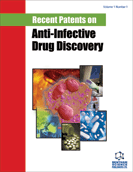Abstract
Microbial pathogens with resistance to conventional drugs are a problem of global proportions and may be viral such as HIV, bacterial as in the case of MRSA or eukaryotic as seen with the malarial parasite Plasmodium falciparum. In response, photodynamic antimicrobial chemotherapy (PACT) has been developed, which is the delivery of a non-toxic photosensitiser (PS) to the site of a microbial infection. When taken up by the pathogen, illumination of the PS by light at an appropriate wavelength can lead to inactivation of the pathogen through the production of highly reactive free radical species, which induce oxidative damage to lipid, proteins and DNA / RNA, and / or adduct formation between the PS and these microbial biomolecules. Here the photochemical and photophysical steps underlying PS antimicrobial action along with the desirable electronic and physiochemical properties of PS are briefly reviewed. The therapeutic uses of PS are then illustrated with reference to a number that have featured in recent patents, including: The induction of endogenous PS by aminolevulinic acid; phenothiazinium based PS, which are the most studied of PACT agents, psoralens and organorhodium complexes.
Keywords: Photodynamic antimicrobial chemotherapy, photodynamic therapy, photosensitiser, light, type I mechanism, type II mechanism, singlet oxygen, viruses, bacteria, protozoa
 6
6





















